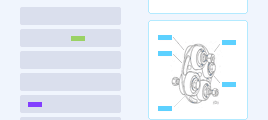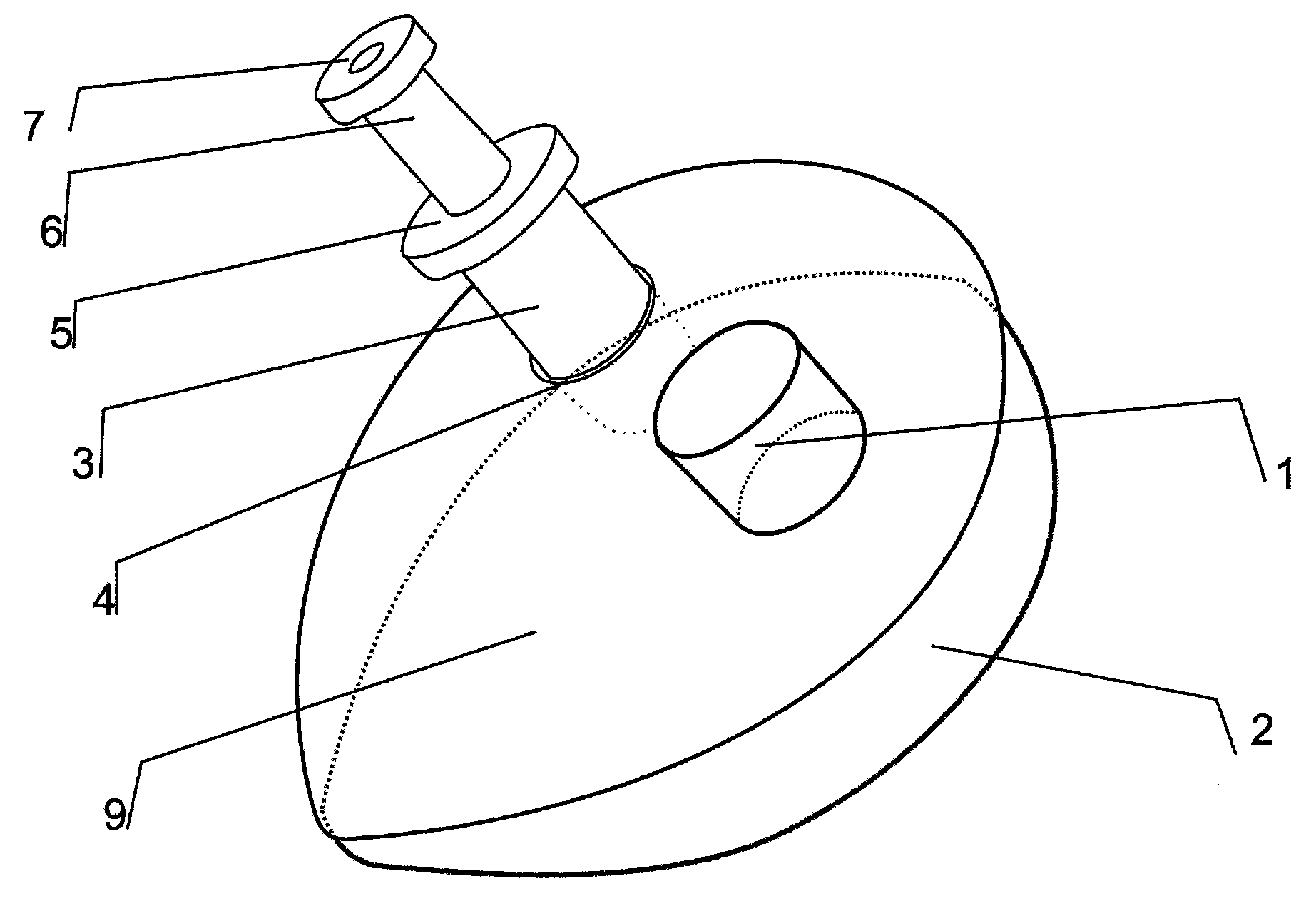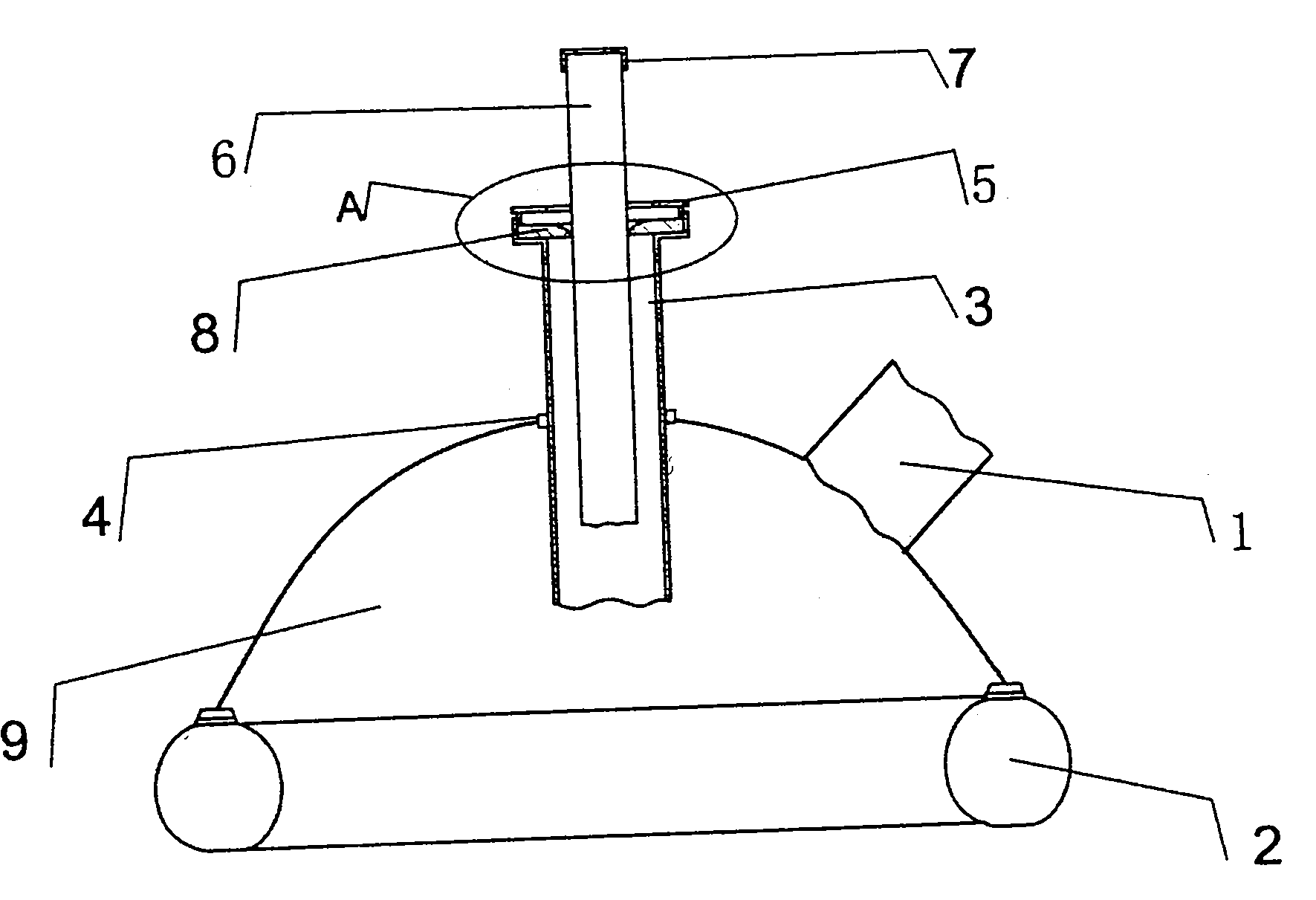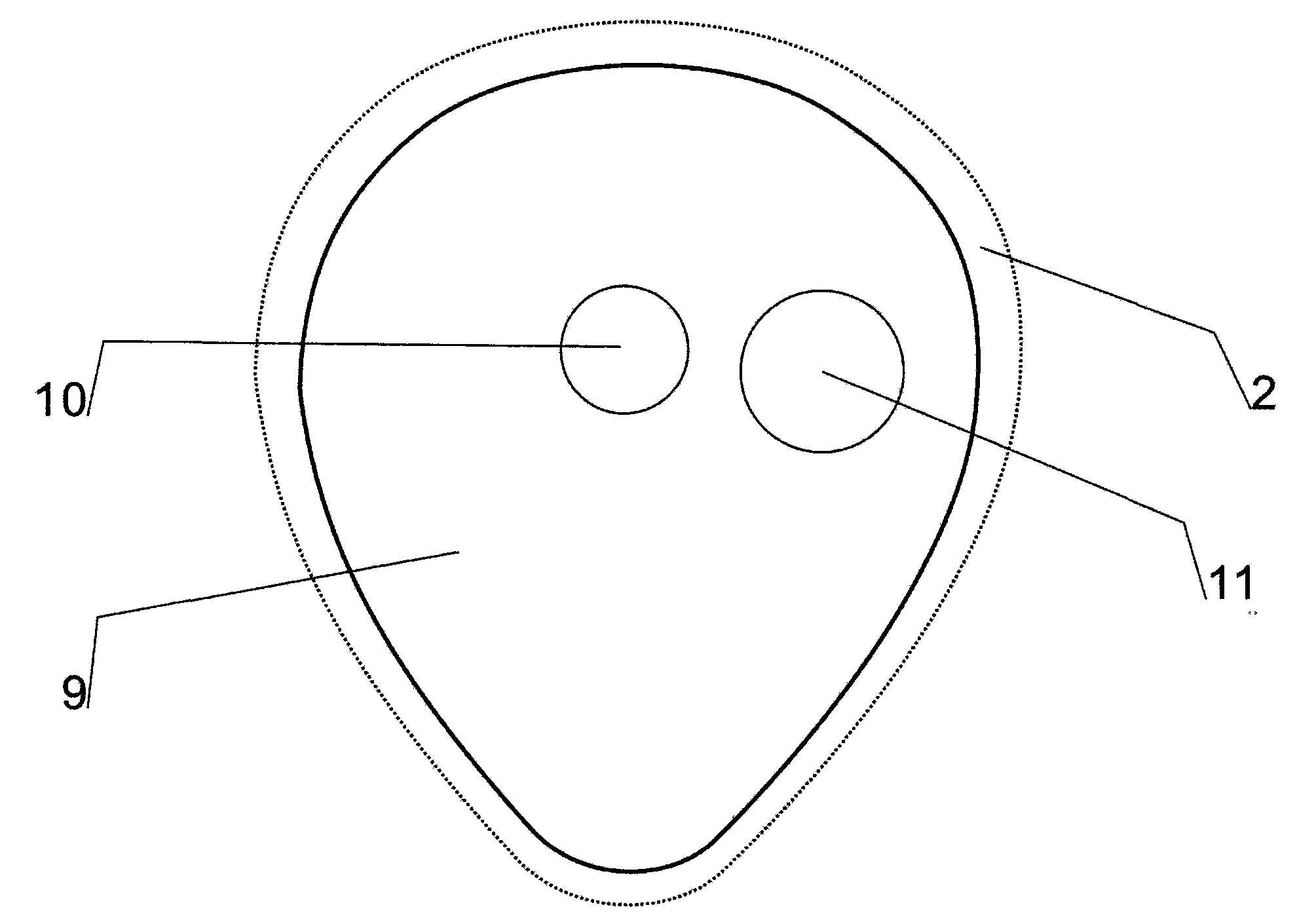[0005] Disadvantages:
Positive pressure ventilation cannot be performed through a face mask at the same time as gastroscope examination. At this time, there will be multiple insertions of
gastroscopes, which is not only time-consuming, but also increases the patient's injury, and also increases the probability of aspiration and laryngospasm; for obese patients It is often the case that the
depth of anesthesia required for gastroscopy is greater than the
depth of anesthesia for respiratory depression, which is more dangerous and more difficult to operate
[0007] Disadvantages: deep anesthesia depth is required;
recovery is slow; the ventilation space is reduced and the
airflow resistance is increased; gastroscopy activities or changes in the patient's
head position will cause the displacement of the laryngeal mask; sometimes the
airway seal is poor; the laryngeal mask can also be used Causing
nausea,
vomiting, and laryngospasm in patients, it is contraindicated in patients with high risk of
vomiting,
reflux and aspiration; patients taking
muscle relaxants need to enter the
postoperative recovery room for monitoring, and are not suitable for non-
hospitalized patients; use with caution in obese patients;
sore throat;
Laryngeal masks are expensive and cost more when hospitalized
[0009] Disadvantages: the gastroscope occupies the
airflow channel and increases the ventilation resistance; the distance from the outer mouth of the corner joint to the incisors is relatively large, which occupies part of the length of the gastroscope and limits the depth of entry; when the angle between the corner joint and the
oral cavity is angled, it is impossible to adjust it to be beneficial to the operator operating angle
[0012] 1) The standard
anesthesia mask, which has not been used in clinical painless anesthesia, is only used to prevent
medical staff from being contaminated by the secretions coughed up by patients
[0013] Disadvantages:
Positive pressure ventilation cannot be performed through a face mask at the same time as
bronchoscopy; if the anesthesia is too deep to suppress
breathing, if the anesthesia is too shallow, coughing and laryngospasm are prone to occur, obese patients are more likely to suffer from respiratory depression, the
depth of anesthesia is difficult to grasp, and risks The coefficient is too large, and there is no
clinical report on the application of standard masks for
bronchoscopy[0015] Disadvantages: The ventilation space is reduced, and the
airflow resistance is increased;
muscle relaxant drugs are required, which is limited to the intraoperative examination of inpatients, and the postoperative need to enter the
recovery room after anesthesia, and the outpatient examination is rarely used, and the cost is high
[0018] Disadvantages: deep anesthesia depth is required; slow
recovery; reduced ventilation space and increased airflow resistance; movement of the endoscope or changes in the patient's
head position can lead to displacement of the laryngeal mask;
airway tightness is sometimes poor; the laryngeal mask can cause
Nausea, vomiting, and laryngospasm in patients; aspiration cannot be prevented during hemoptysis, and it is also not conducive to oral cleaning; patients taking
muscle relaxants need to enter the
postoperative recovery room for monitoring, which is not suitable for non-
hospitalized patients;
throat pain;
obesity patients should be cautious. use;
laryngeal masks are expensive and more expensive when hospitalized
[0020] Disadvantages: The bronchoscope occupies the airflow channel and increases the ventilation resistance; the distance from the outer mouth of the corner joint to the
glottis is larger than the distance from the
nostril to the
glottis, which occupies part of the length of the bronchoscope and limits the inspection depth of the endoscope; the inner mouth of the corner joint to the
glottis There is a certain distance between the incisors and there is no support, which is not conducive to the softer (bronch) bronchoscope (
diameter 2-7mm) entering the trachea through the
oral pharynx with greater resistance; when the angle between the corner joint and the
oral cavity is formed, it is impossible to adjust to The angle that is conducive to the operator's operation
[0023] Disadvantages: The airtightness of the side opening of the mask is poor, and its application is limited in patients who need to control
breathing; the distance from the side hole to the glottis is larger than the distance from the
nostril to the glottis, which occupies part of the length of the bronchoscope and limits the endoscope The depth of inspection; the side hole into the endoscope is not the best angle for the operator to operate; there is a certain distance from the side hole to the incisors, and there is no support, which is not conducive to the passage of the thinner (bronch) bronchoscope (
diameter 2-7mm) with greater resistance The
oral pharynx enters the trachea, which is also not conducive to the bronchoscope entering the trachea through the
oral cavity with
high resistance (especially the base of the tongue)
 Login to View More
Login to View More  Login to View More
Login to View More 


